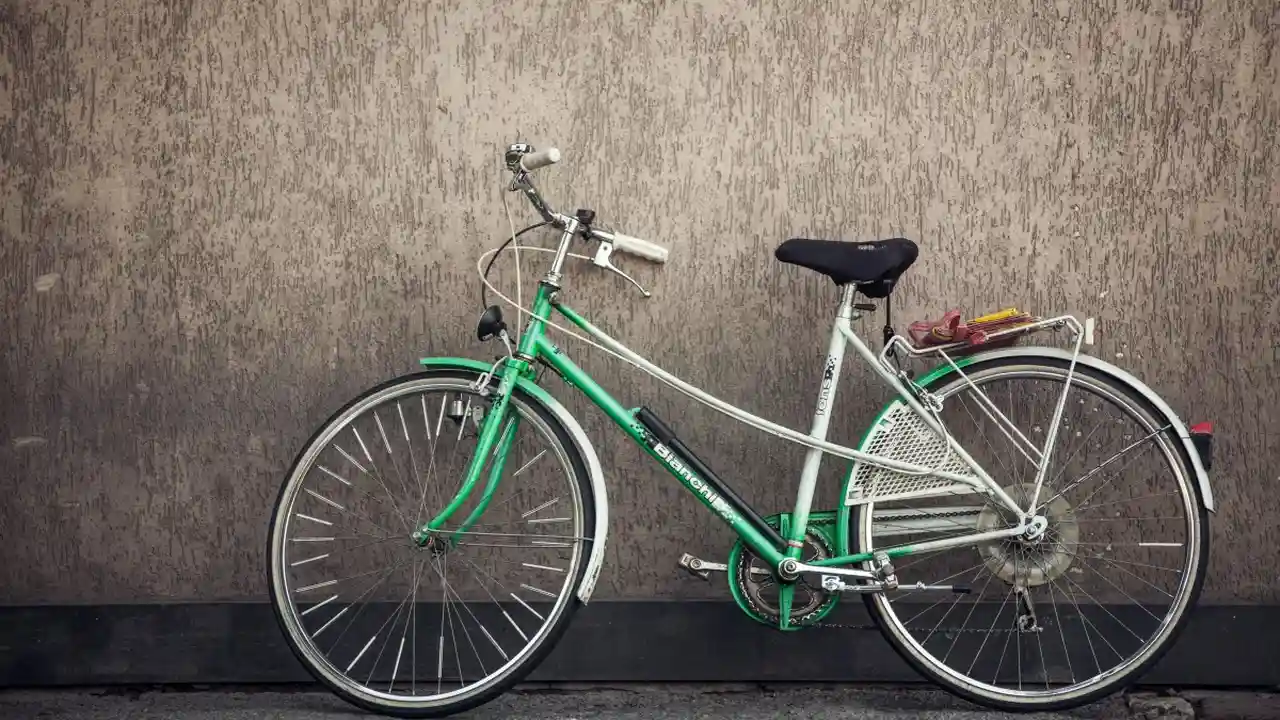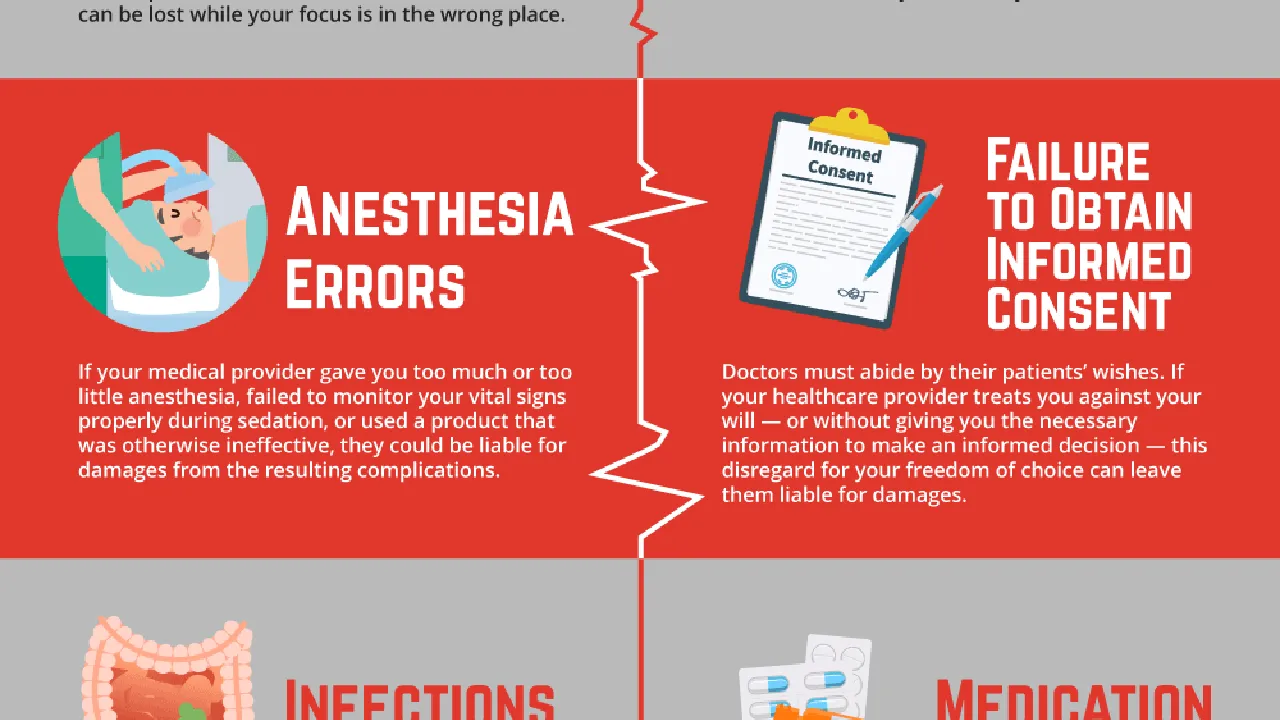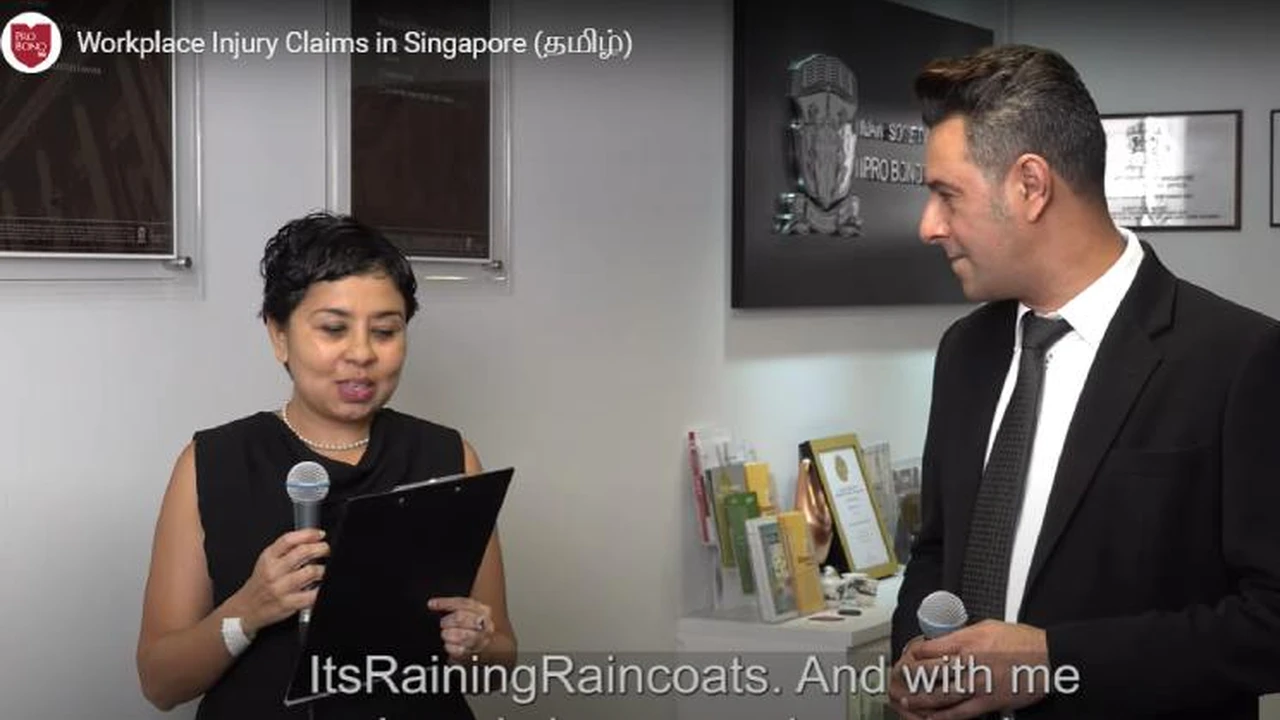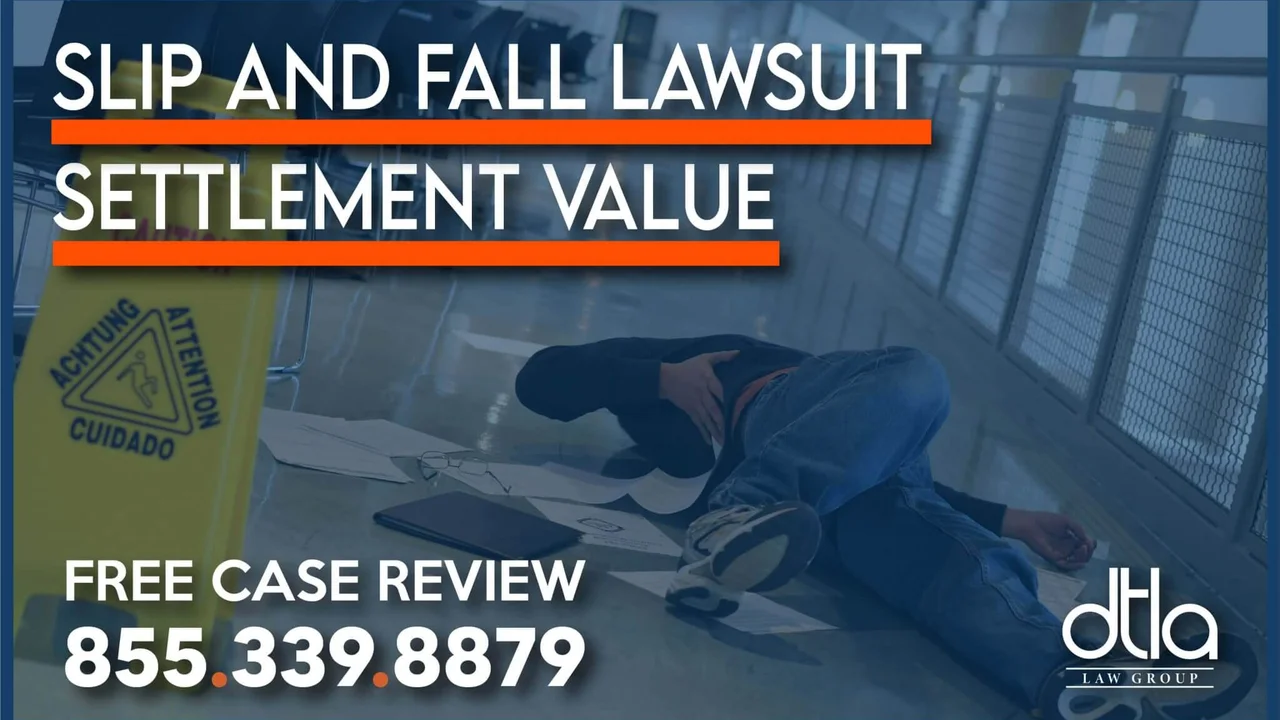Bicycle Accident Claims Legal Guide
A comprehensive legal guide for victims of bicycle accidents seeking personal injury compensation.

A comprehensive legal guide for victims of bicycle accidents seeking personal injury compensation.
Bicycle Accident Claims Legal Guide
Understanding Bicycle Accident Claims Your Rights and Options
Hey there! If you're reading this, chances are you or someone you know has been involved in a bicycle accident. First off, I'm really sorry to hear that. It's a tough situation, and dealing with injuries, bike damage, and insurance companies can feel overwhelming. But don't worry, you're not alone, and this guide is here to walk you through your rights and options for seeking personal injury compensation. We'll cover everything from what to do right after an accident to how to navigate the legal process, whether you're in the USA or Southeast Asia. Let's get started!Immediate Steps After a Bicycle Accident Protecting Your Claim
Okay, so an accident just happened. Your adrenaline is probably pumping, and you might be in pain. But what you do in the moments and hours immediately following the crash can significantly impact any future personal injury claim. Think of these as your crucial first moves:Prioritizing Safety and Medical Attention
Your health is paramount. Even if you feel okay, get checked out by a medical professional. Some injuries, like concussions or internal bleeding, might not be immediately apparent. Refusing medical attention can not only jeopardize your health but also weaken your personal injury claim later on, as insurance companies might argue your injuries weren't severe or weren't caused by the accident. Call 911 if you're seriously injured. If not, head to an urgent care clinic or your doctor as soon as possible.Reporting the Accident to Authorities Police Report Importance
Always, always, always call the police. A police report creates an official record of the incident, which is incredibly valuable for your personal injury claim. It will document details like the date, time, location, parties involved, and often, the officer's initial assessment of fault. Make sure to get the report number and the officer's name and badge number.Gathering Evidence at the Scene Photos and Witness Information
If you're able, and it's safe to do so, start collecting evidence right away. Your phone is your best friend here:- Take Photos and Videos: Get pictures of everything – your bike, the other vehicle (if involved), the accident scene from different angles, road conditions, traffic signs, skid marks, your injuries, and any visible damage to your clothing or gear. The more, the better!
- Exchange Information: Get the other driver's name, contact information, insurance details, and license plate number. If there are witnesses, get their names and phone numbers too. Their testimony can be incredibly helpful.
- Note Down Details: Write down everything you remember about the accident – how it happened, what you saw, what was said, the weather conditions, etc. Memories fade, so jot it down while it's fresh.
Avoiding Admissions of Fault What Not to Say
This is super important: do not apologize or admit fault, even if you think you might have contributed to the accident. Let the facts speak for themselves. Anything you say can be used against you by insurance companies trying to minimize their payout. Stick to the facts and avoid speculation.Common Causes of Bicycle Accidents Driver Negligence and Road Hazards
Bicycle accidents can happen for a variety of reasons, but often, they boil down to driver negligence or unsafe road conditions. Understanding these common causes can help you identify potential liability in your personal injury claim.Driver Related Causes Distracted Driving and Failure to Yield
Unfortunately, many accidents involving cyclists are due to drivers not paying attention or not respecting cyclists' rights on the road. Some common culprits include:- Distracted Driving: Texting, talking on the phone, eating, or fiddling with the radio – anything that takes a driver's eyes off the road can be deadly for a cyclist.
- Failure to Yield: Drivers turning left in front of cyclists, pulling out from driveways or side streets, or failing to yield at intersections are frequent causes of collisions.
- Dooring: A driver or passenger opening a car door into the path of an oncoming cyclist. This is surprisingly common and can cause serious injuries.
- Unsafe Lane Changes: Drivers changing lanes without checking their blind spots or giving enough space to cyclists.
- Driving Under the Influence: Impaired drivers pose a significant risk to everyone on the road, especially vulnerable cyclists.
Road Hazard Related Causes Potholes and Debris
Sometimes, the road itself is to blame. Poorly maintained roads can be just as dangerous as negligent drivers:- Potholes and Cracks: These can cause a cyclist to lose control, especially at speed.
- Gravel, Sand, or Debris: Loose materials on the road can make tires lose traction, leading to falls.
- Poor Road Design: Lack of dedicated bike lanes, inadequate shoulders, or dangerous intersections can contribute to accidents.
- Construction Zones: Often present new hazards like uneven surfaces, loose materials, or unexpected obstacles.
- Slippery Surfaces: Oil slicks, wet leaves, or ice can make roads treacherous for cyclists.
Types of Injuries in Bicycle Accidents Seeking Compensation
Bicycle accidents can result in a wide range of injuries, from minor scrapes to life-altering trauma. The severity and type of your injuries will significantly impact the value of your personal injury claim.Common Physical Injuries Fractures and Head Trauma
Cyclists are vulnerable, and even a low-speed impact can cause serious harm:- Head Injuries: Concussions, traumatic brain injuries (TBIs), and skull fractures are unfortunately common, even with a helmet. Always get any head impact checked out.
- Fractures: Broken bones in arms, legs, wrists, collarbones, and ribs are frequent.
- Spinal Cord Injuries: These can range from whiplash to severe damage leading to paralysis.
- Road Rash: Abrasions and lacerations from sliding on the pavement, which can be deep and require extensive medical care to prevent infection and scarring.
- Internal Injuries: Organ damage, internal bleeding, or collapsed lungs might not be immediately visible but are life-threatening.
- Dental and Facial Injuries: Broken teeth, jaw fractures, and facial lacerations.
Psychological and Emotional Impact PTSD and Anxiety
Beyond the physical, bicycle accidents can leave lasting psychological scars. Don't underestimate the impact of:- Post-Traumatic Stress Disorder (PTSD): Flashbacks, nightmares, and severe anxiety related to the accident.
- Anxiety and Depression: Difficulty riding a bike again, fear of traffic, or general feelings of sadness and hopelessness.
- Loss of Enjoyment of Life: Inability to participate in activities you once loved due to physical or psychological limitations.
Legal Framework for Bicycle Accident Claims USA vs Southeast Asia
Navigating the legal landscape for bicycle accident claims can differ significantly depending on whether you're in the USA or a country in Southeast Asia. While the core principles of negligence often apply, specific laws, insurance systems, and cultural approaches can vary.USA Specific Laws Negligence and Comparative Fault
In the USA, personal injury claims for bicycle accidents typically fall under negligence law. This means you generally need to prove that the other party (usually a driver or property owner) owed you a duty of care, breached that duty, and that their breach directly caused your injuries and damages.- Negligence: The cornerstone of most personal injury cases. You must demonstrate the other party acted carelessly or recklessly.
- Comparative Negligence: Most US states follow some form of comparative negligence. This means if you are found partially at fault for the accident, your compensation might be reduced by your percentage of fault. Some states have 'pure comparative negligence' (you can recover even if 99% at fault), while others have 'modified comparative negligence' (you can't recover if you're 50% or 51% or more at fault).
- No-Fault Insurance: A few US states have 'no-fault' car insurance systems. In these states, your own insurance typically pays for your medical expenses regardless of who was at fault, up to a certain limit. However, you can still pursue a personal injury claim against the at-fault driver if your injuries meet a certain 'threshold' (e.g., severe injury or significant medical bills).
- Statute of Limitations: This is the time limit within which you must file a lawsuit. It varies by state, but typically ranges from 1 to 3 years for personal injury claims. Missing this deadline almost always means losing your right to sue.
Southeast Asia Specific Laws Cultural Nuances and Insurance Systems
Southeast Asia is a diverse region, and laws can vary significantly from country to country (e.g., Thailand, Vietnam, Malaysia, Indonesia, Philippines). However, some general observations can be made:- Negligence Principles: Similar to the USA, proving negligence is usually key. However, the burden of proof and how it's applied can differ.
- Insurance Coverage: Mandatory third-party liability insurance for vehicles is common, but coverage limits might be lower than in the USA. Bicycle-specific insurance is less common.
- Cultural Factors: In some cultures, there might be a greater emphasis on mediation or informal resolution before resorting to litigation. The concept of 'face' can also play a role in negotiations.
- Road Rules and Enforcement: Bicycle laws and their enforcement can vary widely. In some areas, cyclists might be seen as having fewer rights or less protection than in Western countries.
- Statute of Limitations: These also exist but vary by country. It's crucial to consult with a local attorney to understand the specific deadlines.
- Documentation: Thorough documentation, including police reports, medical records, and witness statements, is just as vital, if not more so, given potential language barriers or less formalized processes.
Calculating Your Bicycle Accident Claim Damages and Compensation
So, what kind of compensation can you expect to receive? Your personal injury claim aims to make you 'whole' again, as much as money can. This includes both economic and non-economic damages.Economic Damages Medical Bills and Lost Wages
These are the quantifiable losses that have a clear monetary value:- Medical Expenses: This includes everything from emergency room visits, doctor's appointments, surgeries, medications, physical therapy, rehabilitation, and even future medical care you'll need. Keep every single bill and receipt!
- Lost Wages: If your injuries prevented you from working, you can claim compensation for the income you lost. This also includes future lost earning capacity if your injuries permanently affect your ability to work.
- Property Damage: The cost to repair or replace your bicycle, helmet, clothing, and any other damaged personal items.
- Out-of-Pocket Expenses: Things like transportation to medical appointments, prescription costs, or even hiring help for household tasks you can no longer perform due to your injuries.
Non Economic Damages Pain and Suffering Emotional Distress
These are harder to quantify but are a significant part of your personal injury claim:- Pain and Suffering: Compensation for the physical pain you've endured and will continue to endure.
- Emotional Distress: This covers anxiety, fear, depression, PTSD, and other psychological impacts of the accident.
- Loss of Enjoyment of Life: If your injuries prevent you from participating in hobbies, sports, or activities you once loved, you can be compensated for this loss.
- Loss of Consortium: In some cases, a spouse can claim damages for the loss of companionship, affection, and support due to their partner's injuries.
Hiring a Bicycle Accident Lawyer When and Why It Matters
While you can technically handle a personal injury claim yourself, it's often a complex process, especially when dealing with serious injuries or uncooperative insurance companies. This is where a personal injury lawyer specializing in bicycle accidents becomes invaluable.Benefits of Legal Representation Maximizing Your Settlement
- Expertise: Lawyers understand personal injury law, insurance tactics, and how to build a strong case.
- Negotiation Skills: They can negotiate with insurance adjusters to ensure you receive fair compensation, often significantly more than you'd get on your own.
- Investigation: They can conduct thorough investigations, gather evidence, interview witnesses, and reconstruct the accident scene.
- Medical Connections: Many personal injury lawyers have connections with medical professionals who can provide expert opinions on your injuries and prognosis.
- Court Representation: If a fair settlement can't be reached, they are prepared to take your case to court.
- Peace of Mind: They handle the legal heavy lifting, allowing you to focus on your recovery.
Choosing the Right Attorney Experience and Fee Structure
When looking for a lawyer:- Look for Experience: Find someone with a proven track record in bicycle accident personal injury cases.
- Contingency Fee Basis: Most personal injury lawyers work on a contingency fee, meaning they only get paid if you win your case, and their fee is a percentage of your settlement. This means no upfront costs for you.
- Good Communication: Choose a lawyer who communicates clearly and keeps you informed.
- Local Knowledge: Especially important in Southeast Asia, a lawyer with local knowledge of laws and cultural nuances is crucial.
Dealing with Insurance Companies Tips and Strategies
Insurance companies are businesses, and their goal is often to pay out as little as possible. Be prepared for their tactics.Initial Contact and Information Sharing What to Expect
- Be Wary of Early Settlement Offers: They might offer a quick, lowball settlement before you even know the full extent of your injuries. Don't accept it.
- Don't Give Recorded Statements: Politely decline to give a recorded statement without consulting your lawyer. They can use your words against you.
- Provide Limited Information: You can provide basic facts about the accident, but avoid discussing your injuries in detail or admitting fault. Refer them to your lawyer.
Negotiation Tactics and Settlement Offers Maximizing Your Claim
Your lawyer will handle most of the negotiations. They will:- Present a Demand Letter: This outlines your injuries, damages, and the compensation you're seeking.
- Counter Offers: Be prepared for back-and-forth negotiations.
- Mediation: Sometimes, a neutral third party (mediator) helps facilitate a settlement.
Preventative Measures for Cyclists Staying Safe on the Road
While this guide focuses on what to do after an accident, prevention is always better than cure. Here are some tips to minimize your risk:Essential Safety Gear Helmets and Lights
- Helmets: Always wear a properly fitted helmet. It's the single most important piece of safety gear.
- Lights: Use front and rear lights, especially at dawn, dusk, or night. Even during the day, a flashing front light can increase your visibility.
- Reflective Gear: Wear bright, reflective clothing, especially when visibility is low.
Visibility and Awareness Defensive Cycling Techniques
- Be Predictable: Ride in a straight line, signal your turns, and follow traffic laws.
- Be Visible: Make eye contact with drivers, especially at intersections. Assume drivers don't see you.
- Maintain a Safe Distance: Give yourself enough space from parked cars (to avoid dooring) and other vehicles.
- Know Your Route: Plan routes that have bike lanes or less traffic.
- Stay Alert: Avoid distractions like headphones that block out traffic sounds.
Recommended Bicycle Safety Products Enhancing Your Ride
Investing in good safety gear can make a huge difference. Here are a few categories and specific product recommendations, keeping in mind that prices can vary widely based on brand, features, and region.Helmets Protecting Your Most Important Asset
Choosing a good helmet is crucial. Look for helmets that meet safety standards (e.g., CPSC in the USA, EN 1078 in Europe, or local standards in Southeast Asia).- Entry-Level/Commuter Helmets (e.g., Giro Register MIPS, Bell Avenue MIPS): These typically cost around $60-$100 USD. They offer good protection, ventilation, and often include MIPS (Multi-directional Impact Protection System) technology, which helps reduce rotational forces during certain impacts. Great for daily commutes and casual rides.
- Mid-Range Road/Mountain Bike Helmets (e.g., Specialized Echelon II, Kask Mojito 3): Expect to pay $100-$200 USD. These offer better ventilation, lighter weight, and more aerodynamic designs. Many come with MIPS or similar rotational impact protection. Ideal for more serious recreational riders.
- High-End Aero/Race Helmets (e.g., Specialized S-Works Prevail II Vent, POC Ventral SPIN): These can range from $200-$350+ USD. They feature advanced aerodynamics, superior ventilation, and cutting-edge safety technologies. Best for competitive cyclists or those who prioritize top-tier performance and protection.
Lights and Reflectors Be Seen Day and Night
Visibility is key, especially in urban environments or low-light conditions.- Front Lights (e.g., Bontrager Ion 200 RT, Lezyne KTV Drive Front): A good front light should be at least 200 lumens for daytime visibility and 500+ lumens for night riding. Prices range from $30-$100 USD. The Bontrager Ion 200 RT is excellent for daytime running, while Lezyne offers powerful options for night.
- Rear Lights (e.g., Cygolite Hotrod 50, Garmin Varia RTL515): A bright rear light is essential. Look for at least 50 lumens. Prices are typically $20-$80 USD. The Garmin Varia RTL515 (around $200 USD) is a premium option that also functions as a radar, alerting you to approaching vehicles from behind – a fantastic safety feature.
- Reflective Tape/Stickers (e.g., 3M Scotchlite Reflective Tape): Inexpensive ($10-$20 USD for a roll) and can be applied to your bike frame, helmet, or clothing for added passive visibility.
Mirrors and Radar Systems Situational Awareness
Knowing what's around you can prevent many accidents.- Handlebar Mirrors (e.g., Zefal Spy Mirror, Blackburn Multi-Mirror): These small, adjustable mirrors attach to your handlebars or helmet and provide a view of traffic behind you. They are relatively inexpensive, usually $15-$30 USD.
- Garmin Varia Radar (RTL515 or RVR315): As mentioned, the Varia radar system is a game-changer. The RTL515 (with integrated tail light) is around $200 USD, and the RVR315 (radar only) is about $150 USD. It pairs with your bike computer or smartphone to give visual and audible alerts of vehicles approaching from behind, including their speed and distance. Highly recommended for road cyclists.
Action Cameras Documenting Your Ride
While not directly preventative, an action camera can be invaluable for documenting an accident, providing irrefutable evidence for your personal injury claim.- GoPro Hero Series (e.g., Hero11 Black, Hero10 Black): The gold standard for action cameras. Prices range from $250-$400+ USD depending on the model. They offer excellent video quality, stabilization, and durability. Mount one on your helmet or handlebars.
- Garmin VIRB Ultra 30: Another high-quality option with good features, often comparable to GoPro. Prices are similar.
- Cycliq Fly6 and Fly12 (Integrated Camera and Light): These are specifically designed for cyclists, combining a powerful light with a high-definition camera. The Fly6 (rear light/camera) is around $200-$250 USD, and the Fly12 (front light/camera) is about $300-$350 USD. They offer continuous loop recording and incident protection, automatically saving footage if an impact is detected.
Personal Alarms and Communication Devices Emergency Preparedness
In case of an accident, being able to call for help is vital.- Personal Safety Alarms (e.g., SABRE Personal Safety Alarm): Small, loud alarms that can deter attackers or draw attention if you're in distress. Very affordable, typically $10-$20 USD.
- Crash Detection Systems (e.g., Specialized ANGi Sensor, Garmin Edge Computers with Incident Detection): Many modern helmets (like those from Specialized with ANGi) or bike computers (like Garmin Edge series) have built-in crash detection. If a crash is detected, they can automatically send a message with your location to emergency contacts. The ANGi sensor itself is around $50 USD and can be added to compatible helmets. Garmin Edge computers range from $200-$600 USD.
- Roadside Assistance Apps (e.g., AAA, local equivalents): While not a product, having a membership or app that provides roadside assistance for cyclists can be helpful for mechanical issues or if you're stranded after a minor incident.
:max_bytes(150000):strip_icc()/277019-baked-pork-chops-with-cream-of-mushroom-soup-DDMFS-beauty-4x3-BG-7505-5762b731cf30447d9cbbbbbf387beafa.jpg)






